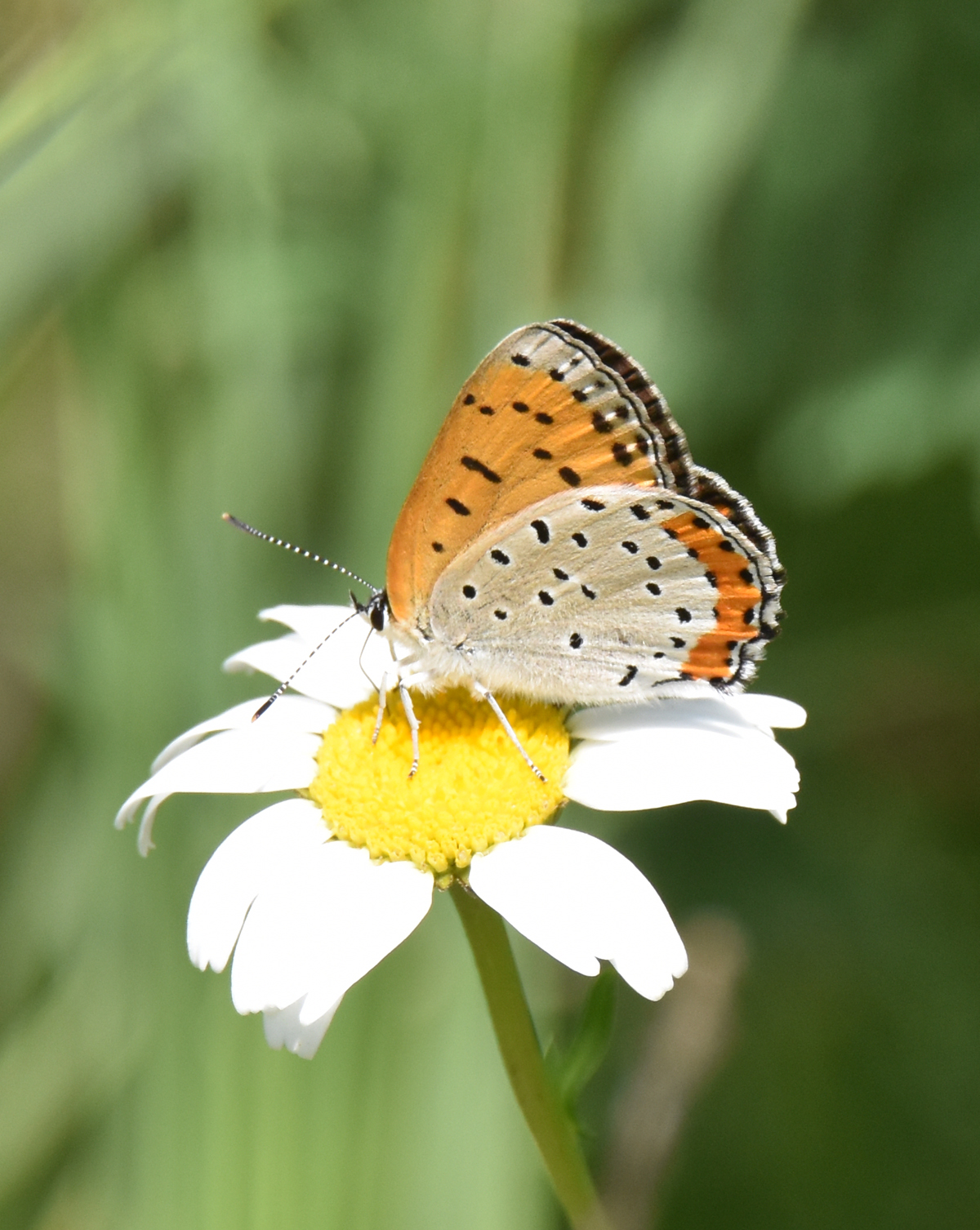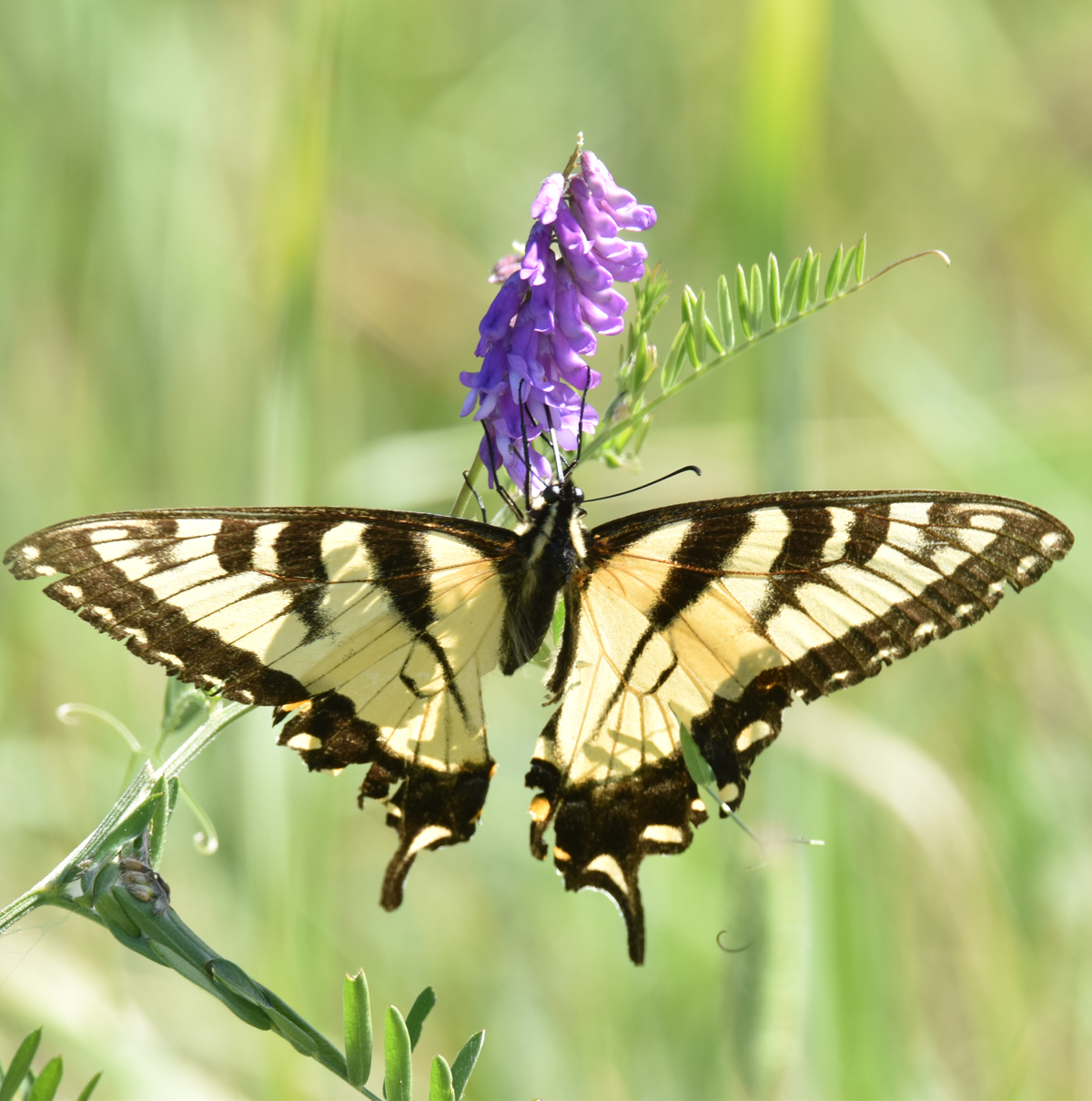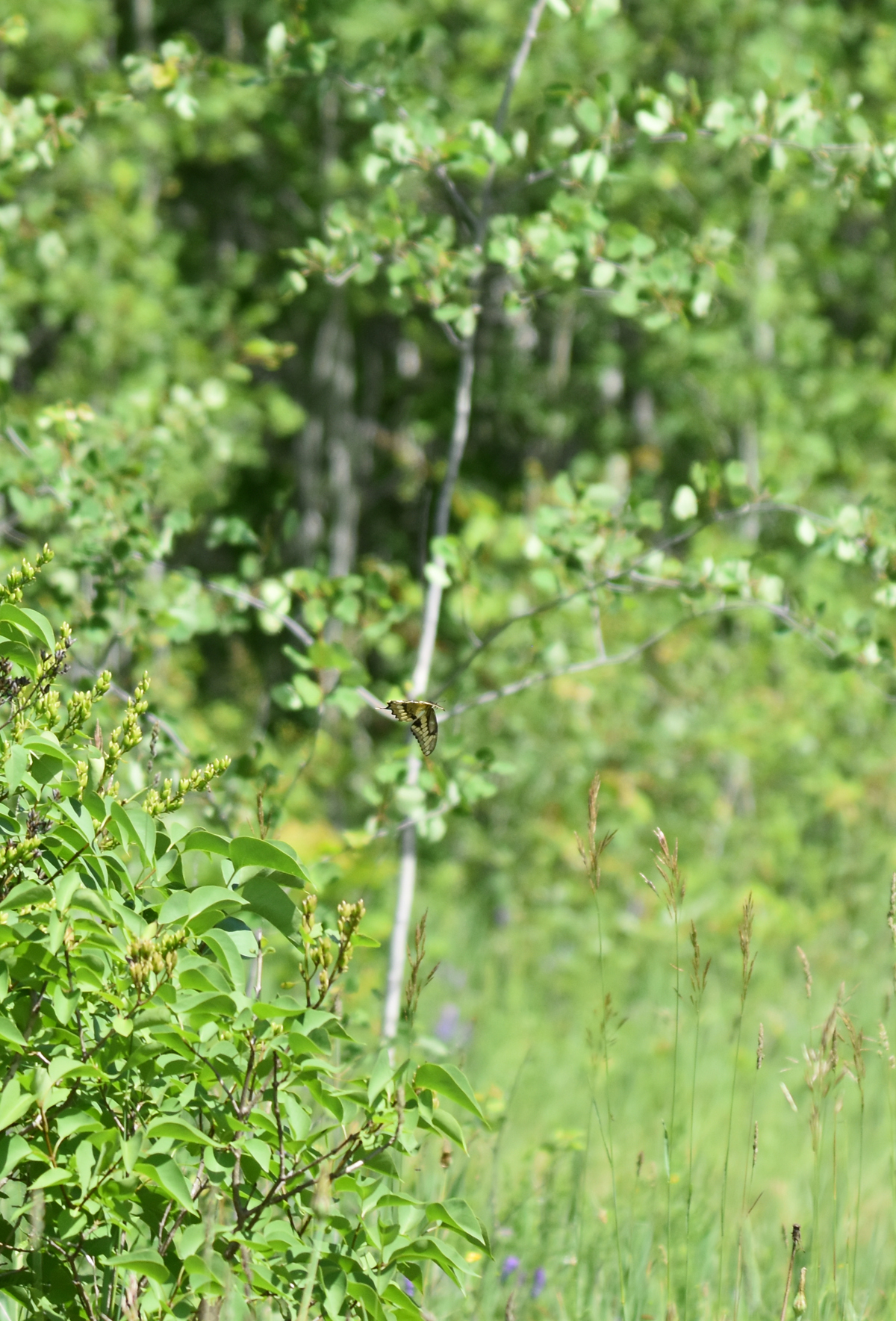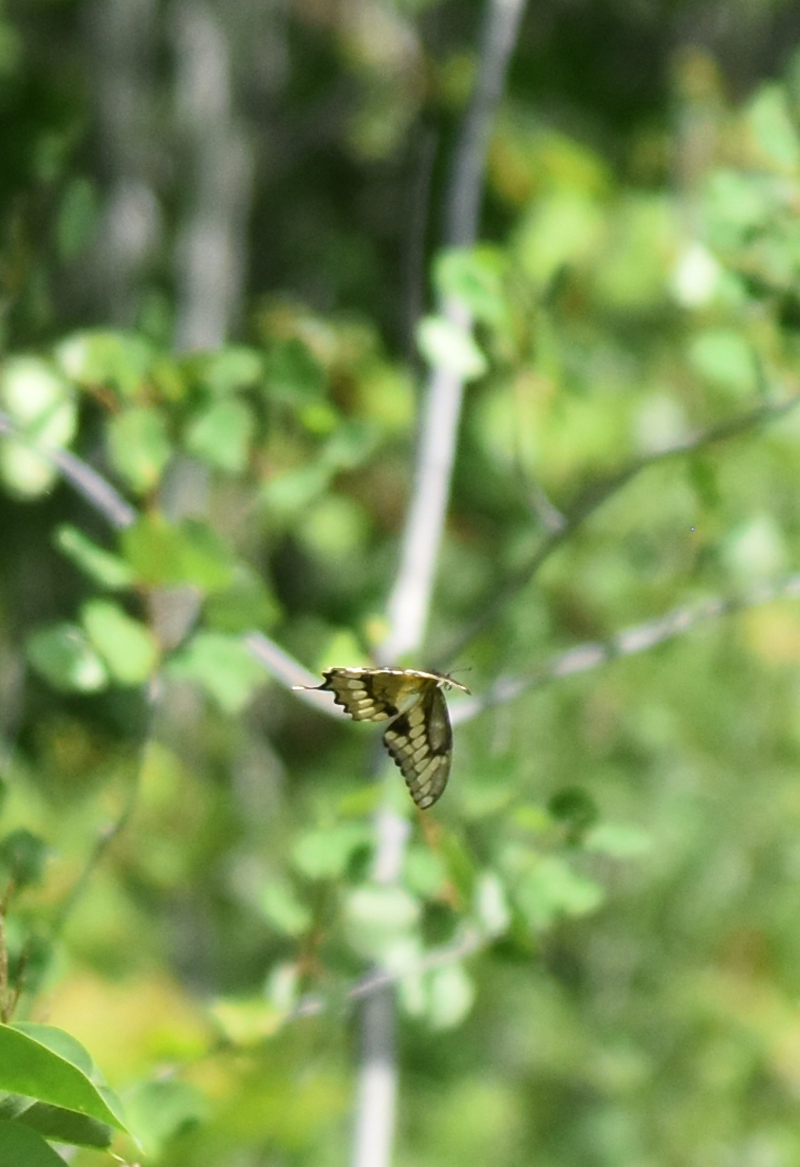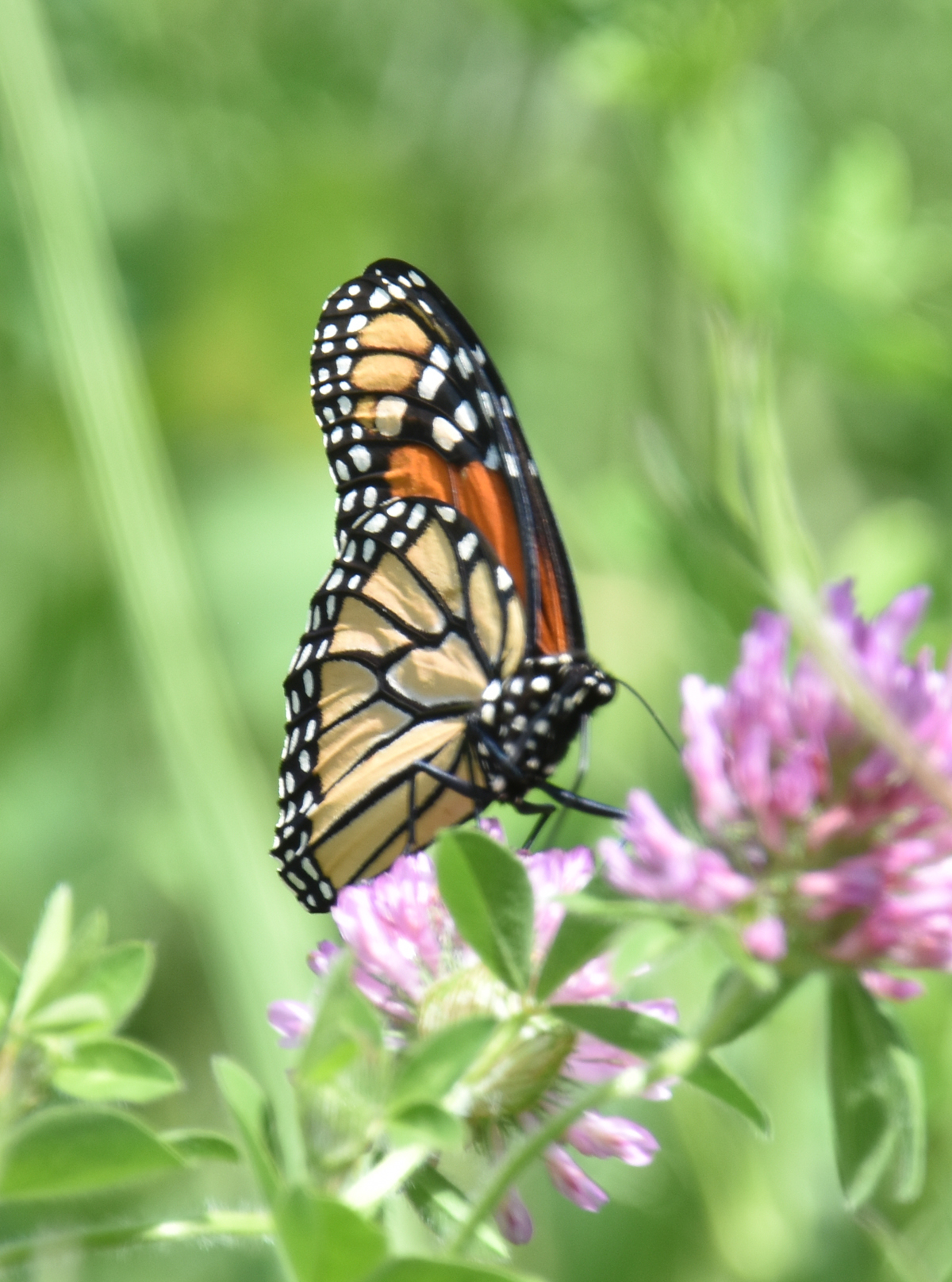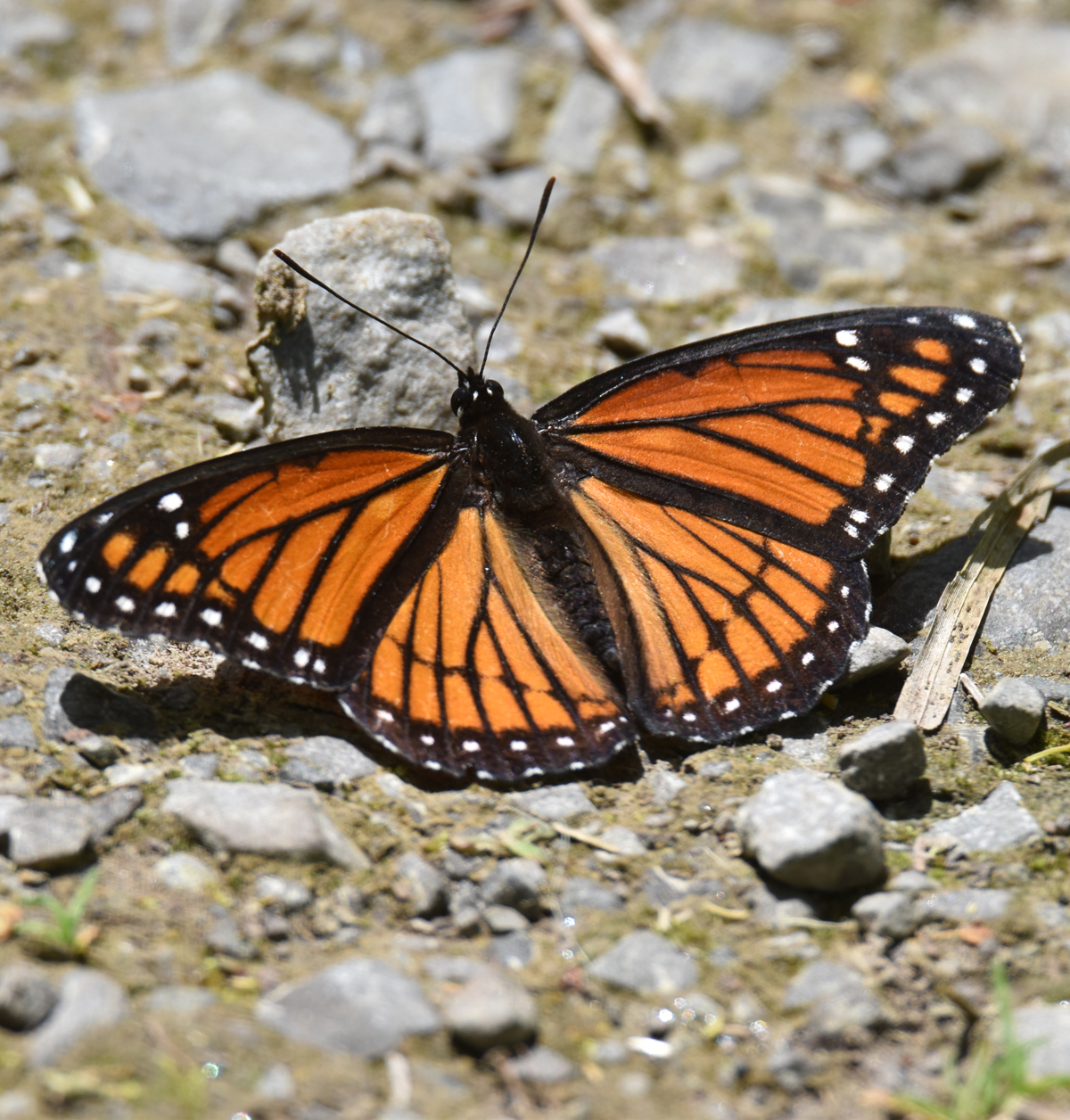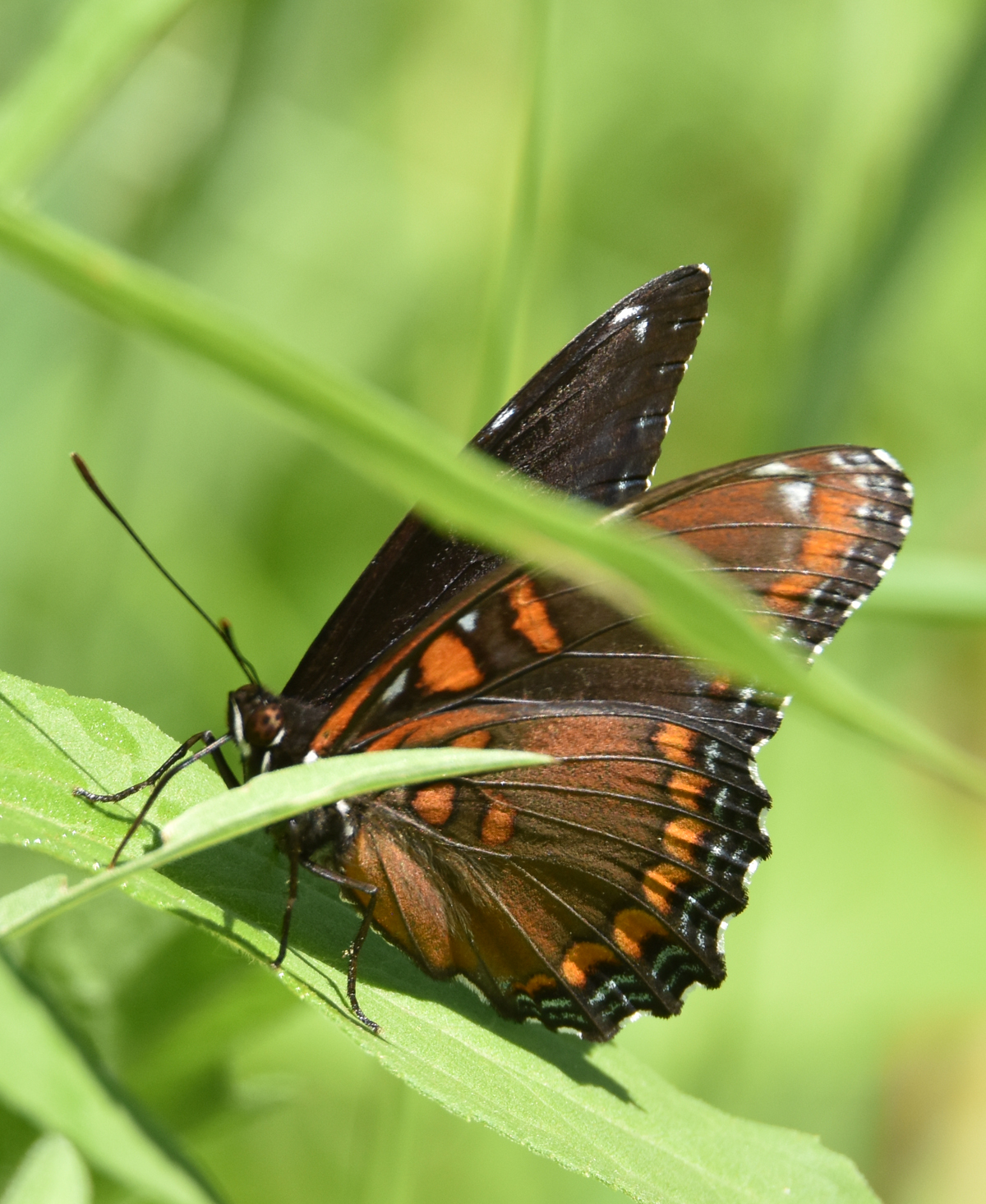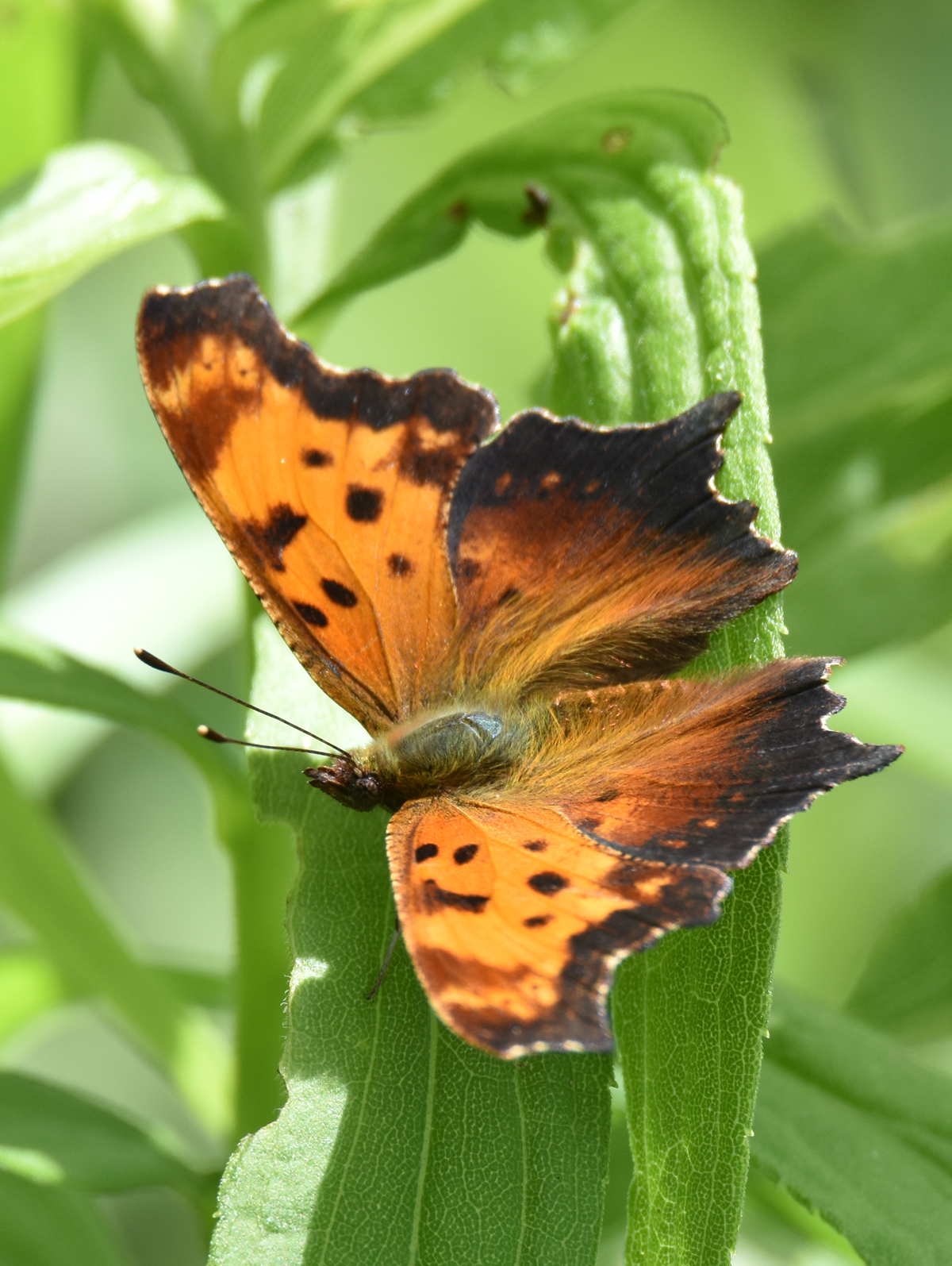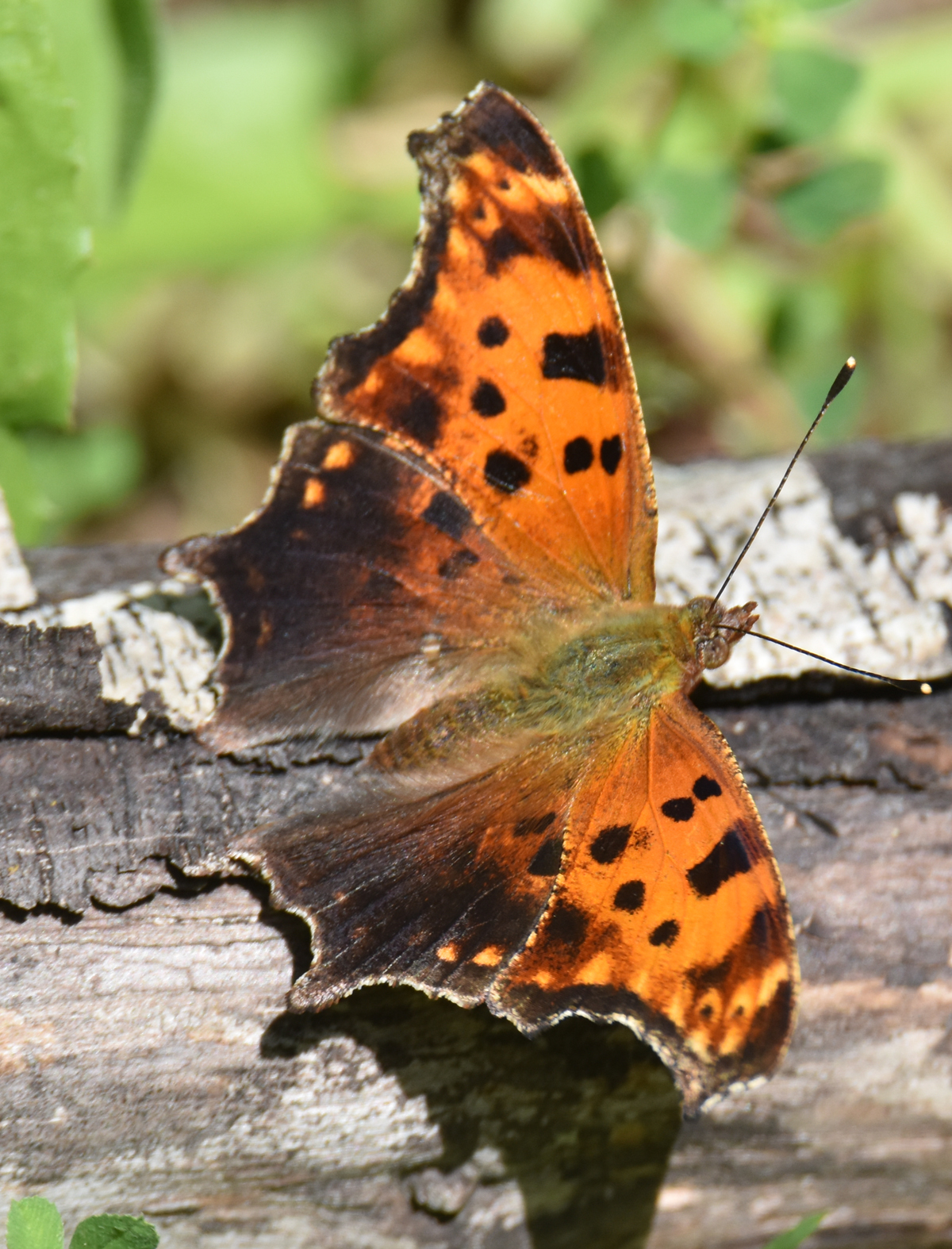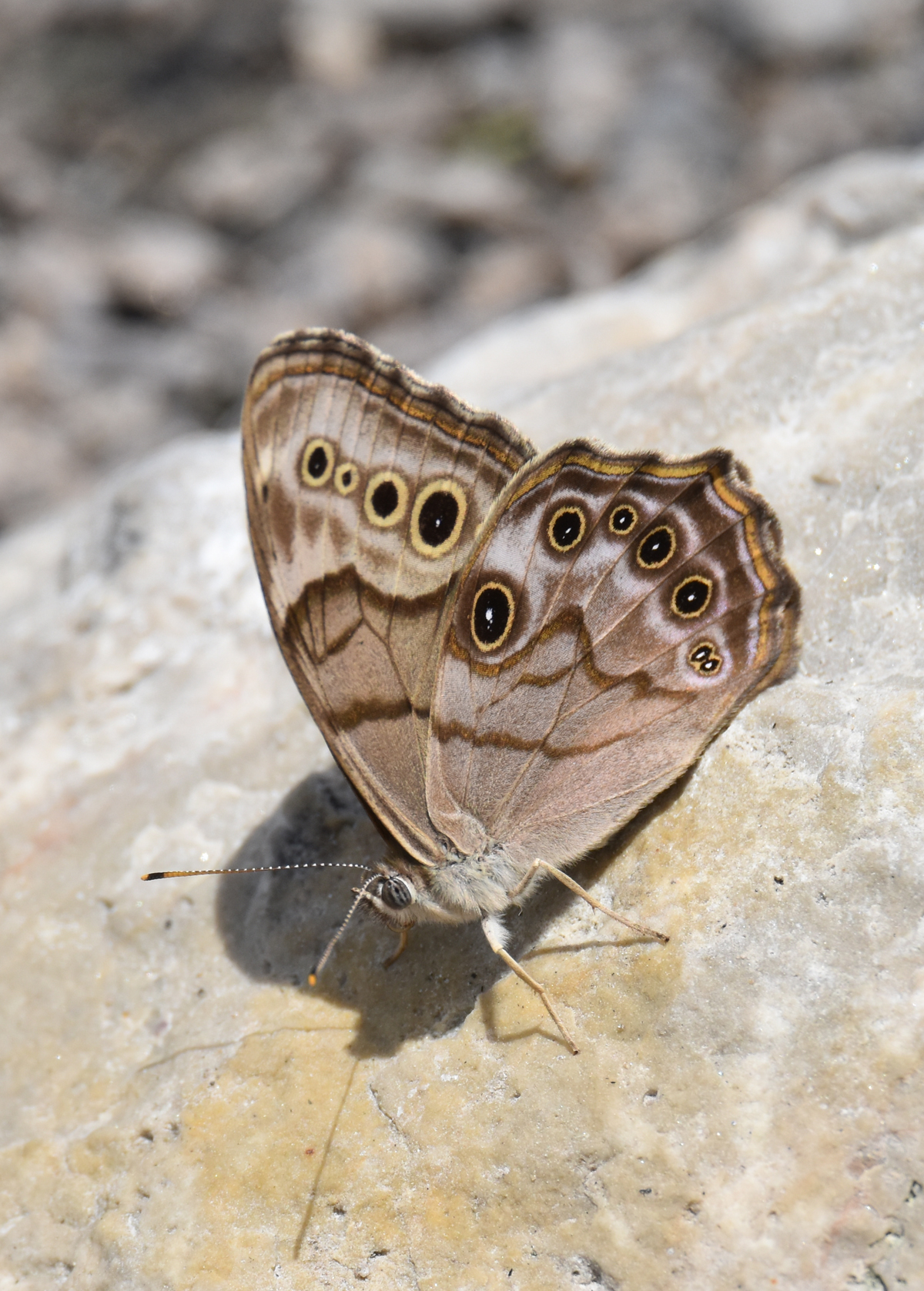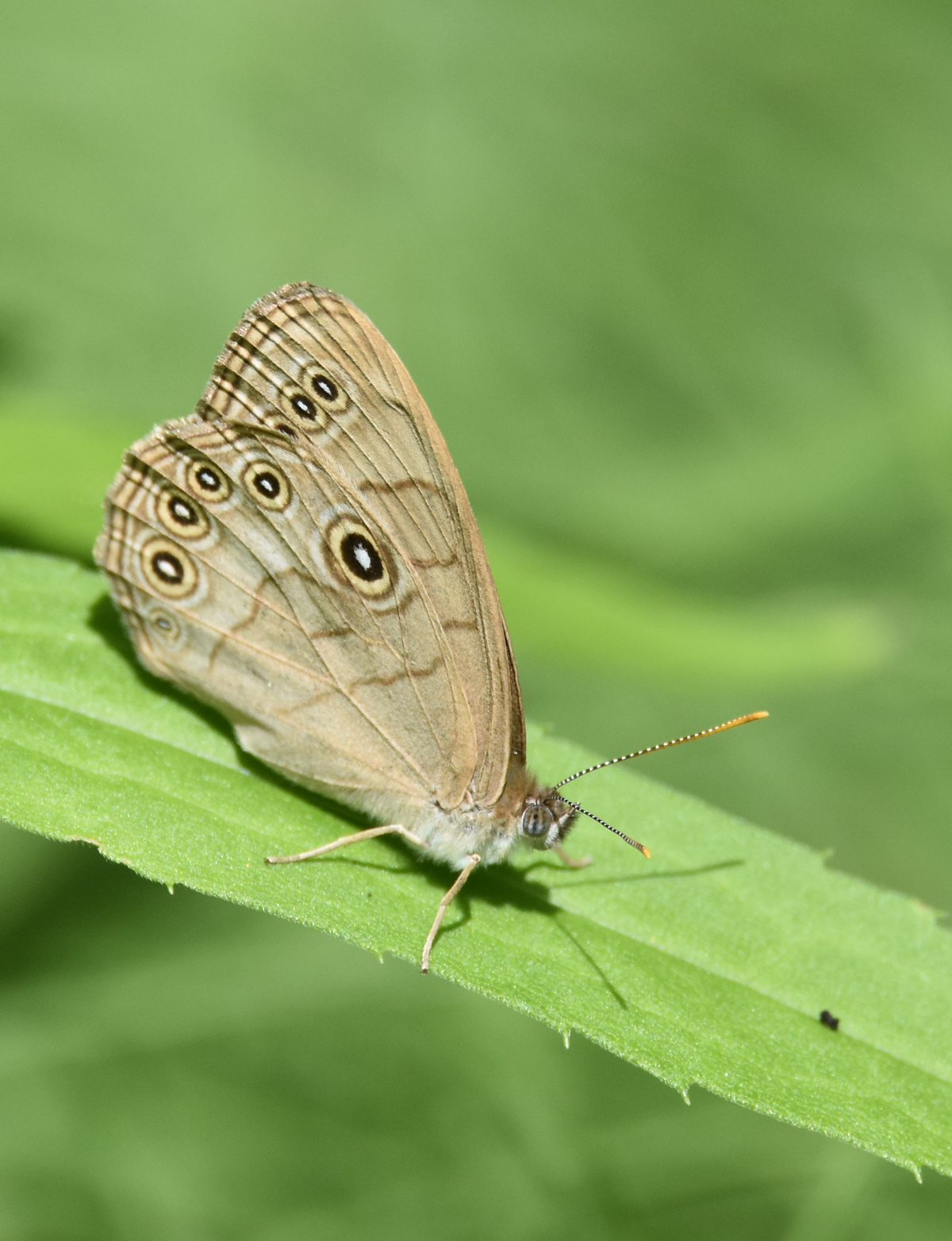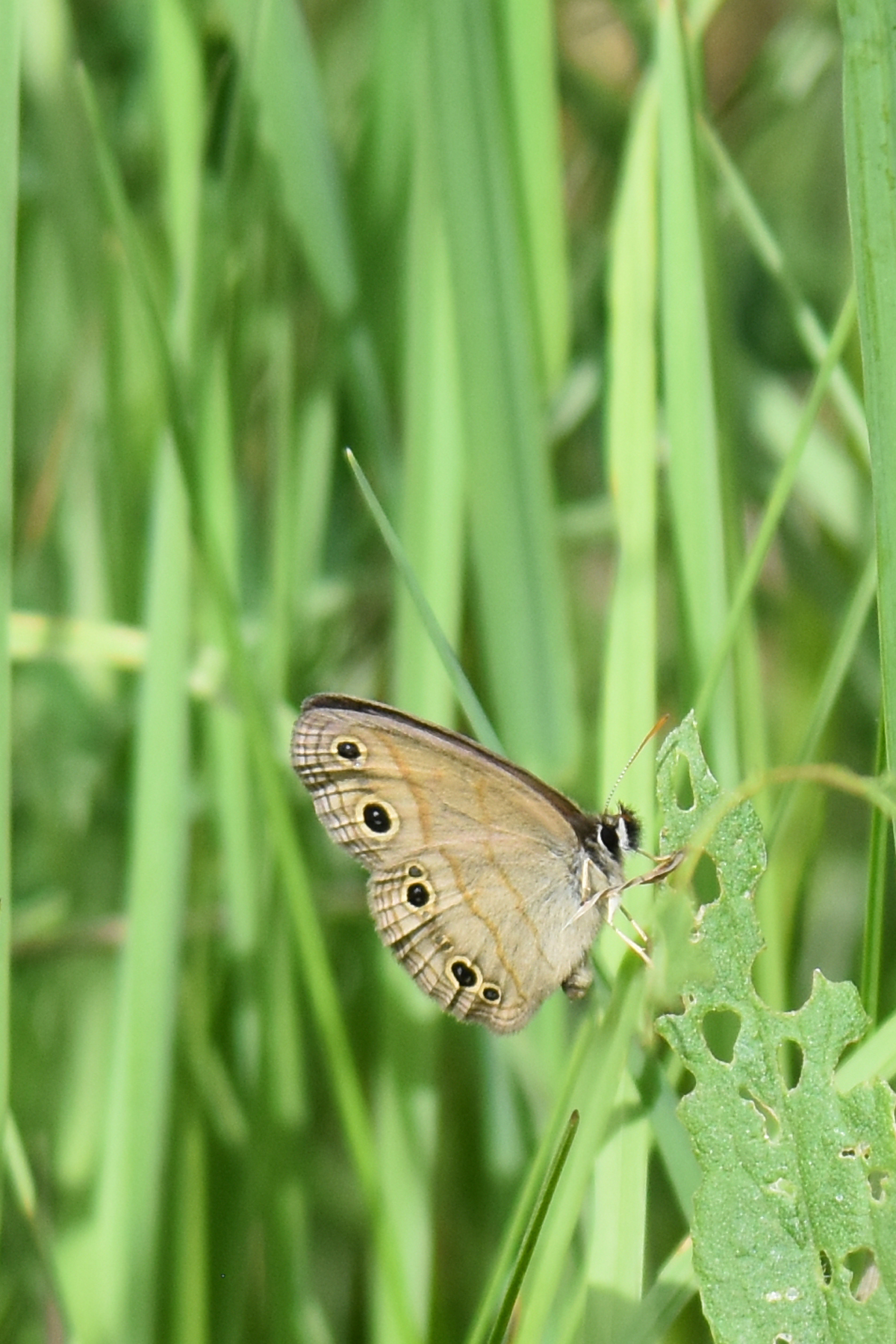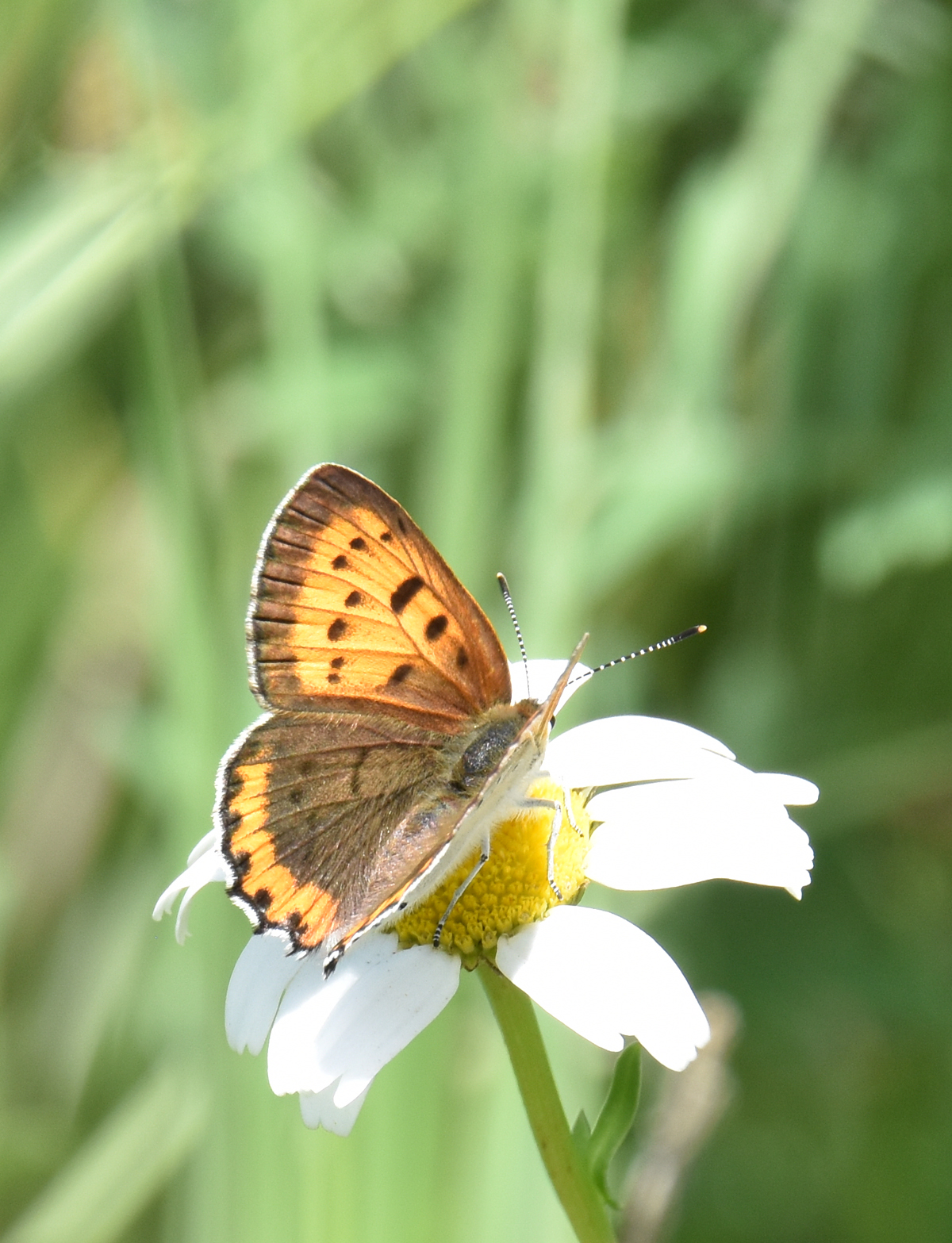I have no idea why I love butterflies so much–after all, as young caterpillars they eat the flowers and trees and rain frass down on my head and shoes. Once they unfurl their wings, though, and drift, float, dart, dodge, lilt, stammer and waft their way through the air, I’m captivated and a huge fan. So when I joined iNaturalist and saw recent photos from a park beyond my usual range but full of wide relatively tick-safe trails, I decided to go for a visit. It’s called the Fletcher Creek Ecological Preserve and it’s located in Puslinch, Ontario according to Google, or Flamborough, according to the Hamilton Conservation Authority that controls it–and in mid to late June it is awash in butterflies!
What is the Fletcher Creek Ecological Preserve?
At first I thought this must be some very complicated place given its mouthful of a name. In reality, it is a park established around an old quarry. There are several ponds, swamps and pools of varying depths. It is bounded on one side by Gore Road and on another by Concession Road 7. The park is a mixture of wetlands, re-forested land, meadows, and hints of former farmland including lilacs and apple trees. You can see why it might be a good place for butterflies–there are lots of different types of plants for foraging caterpillars.
The two main trails, at least this June, have been driven over extensively by park staff, which means that they are not over-grown with long grasses or plants. This reduces the tick risk, for those of us who stay on the trail. If you visit, please be aware that Deer Ticks are present in Hamilton and some have tested positive for Lyme Disease. I don’t know if there are any at this particular park but it’s best to act as if there are. Soon they will be throughout southern Ontario….
What Big Bright Bold Butterflies Bounce Along the Trails at Fletcher Creek In June?
I’m a Tiger Swallowtail!
You have to pay attention to see me: I’m a Giant Swallowtail…..
….See me?!
I’m a Monarch!
Made you look! I’m a Viceroy!
I’m a Red-spotted Purple, a southern version of the White Admiral!
If you are walking along the trail, you may get passed by one of these showier, larger butterflies. They often patrol looking for partners or good places to stop for a sip. Some, like the Giant Swallowtail, rarely perch and keep beating their wings even when they pause at a flower. Others, like the Red-spotted Purples, will bask in the sun and show off their colours. (They are metallic blue on top and glitter gorgeously in the sunshine.)
There are lots of medium-sized butterflies too.
What Other Butterflies Can I Identify Fairly Easily Without a Camera or Binoculars?
Once I started taking photos of butterflies, I began identifying more types. If I just watch them, I only have time to notice that it was orange and black, or was it dark brown? and then it’s gone and I’ve forgotten any patterns or stripes. I certainly would never have been able to identify what type of Comma I was looking at: I didn’t know to check the underside of the wings and look closely at the shape of the white mark. I doubt I could get close enough to see the shape anyway. (Some people report good success by looking at the butterfly through binoculars, which makes sense.)
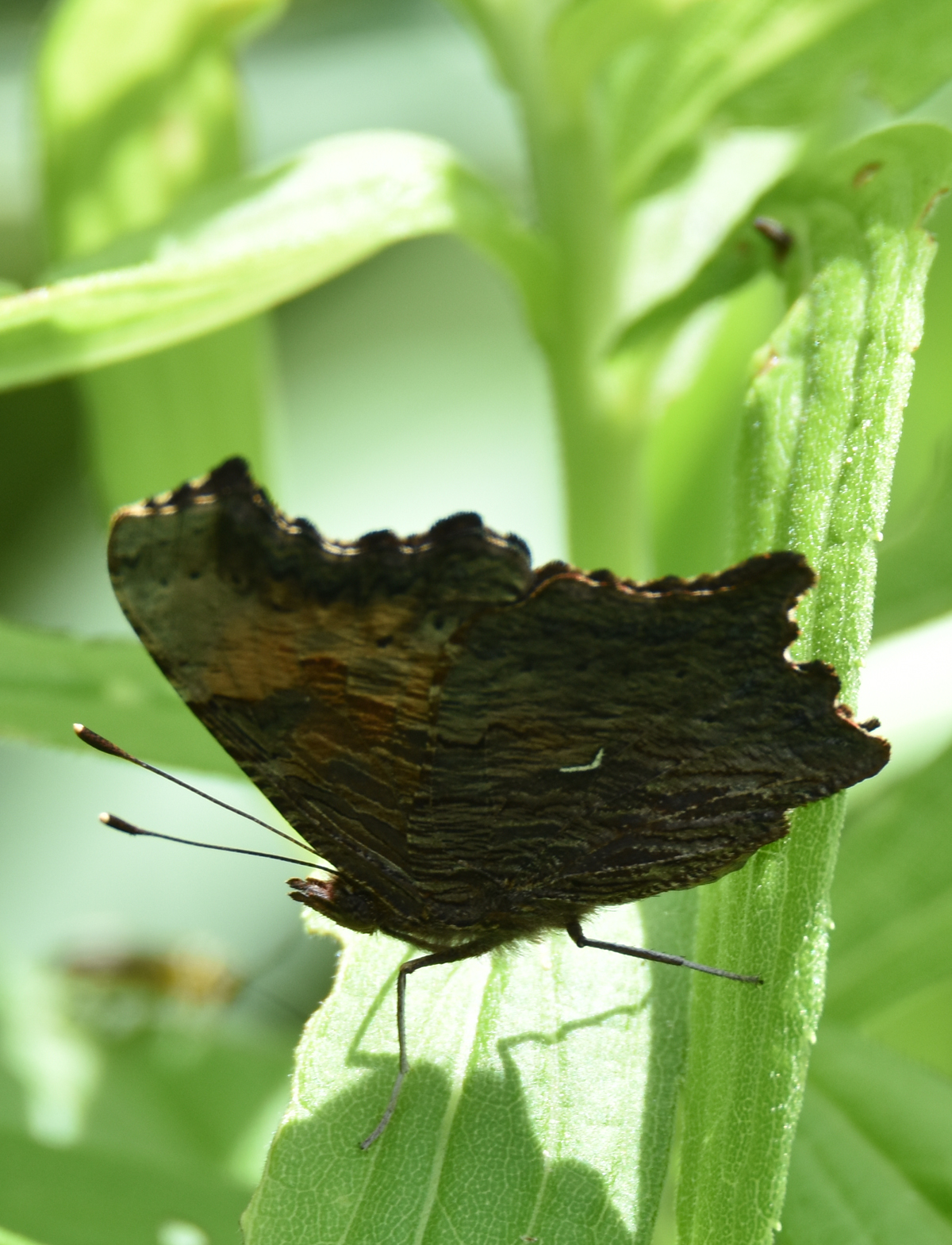
As a Gray Comma, I have a “L” or “hockey stick” thin white mark on my underwing.
Luckily both these butterflies were flapping while perched so I was able to see their Commas. It makes my id attempts much easier.
I’m an Eastern Comma–my spots are larger and darker than those on a Gray!
My sturdy Comma ends in little fishhook shapes at the ends.
Some of the lovely brown butterflies of spring were also out and about at Fletcher Creek by the last week of June.
I’m a Northern Pearly Eye!
This is the first time I’ve seen a Pearly Eye on a beach. They tolerate shade very well and I’m used to seeing them almost in the dark in forests.
I’m an Appalachian Brown!
Speaking of firsts, I took my first photo (as far as I know!) of an Appalachian Brown at Fletcher Creek. It looks at first glance a bit like a Pearly Eye. I noticed, though, that this was a smaller, lighter coloured butterfly. The lines were much thinner. The three spots showing on the top of the wings were almost the same size. And the ring of white around the thin brown ring, around the yellow ring, around the black ring, around the white Eye was more of a distinct ring, not a fuzzy cloud. And the antenna tips have no black (although that could be a male/female thing; I’d need to research that.) Anyway, I asked the Hamilton Naturalists’ Club for help, and they agreed this is an Appalachian Brown.
I’m a Little Wood Satyr!
The Little Wood Satyrs were out in their hundreds in mid- to late June. They only have 4 “big” eyes on their under wings so they are easy to identify.They also have a nice habit of perching in sunny spots to bask which makes it much easier for id and photographers.
I’m a Common Ringlet!
This one Eye’d butterfly is a Ringlet. Sometimes they avoid photos by flying fast and only perching at the base of grasses and goldenrods. Other days, they seem to be posing everywhere. I quite admired the way this one deliberately came up beside me and landed as if saying: Look! I’m really cute!
I also saw some Cabbage Whites and some Sulphurs but I didn’t get any photos of them good enough to share in this post.
And then, of course, there were all the small butterflies: Skippers and Blues and Crescents! They definitely need binoculars, a camera, or a lot of patience and time to identify in the park. I’ll try to write about them next.
Here’s another view of the Bronze Copper. It flew in beside me, landed on some daisies for a minute, then disappeared again. I was very happy to make its acquaintance, even for such a short time!
Related Reading
Join In
Do you have a local park that’s your best bet for butterflies? Please share your ideas with a comment.

